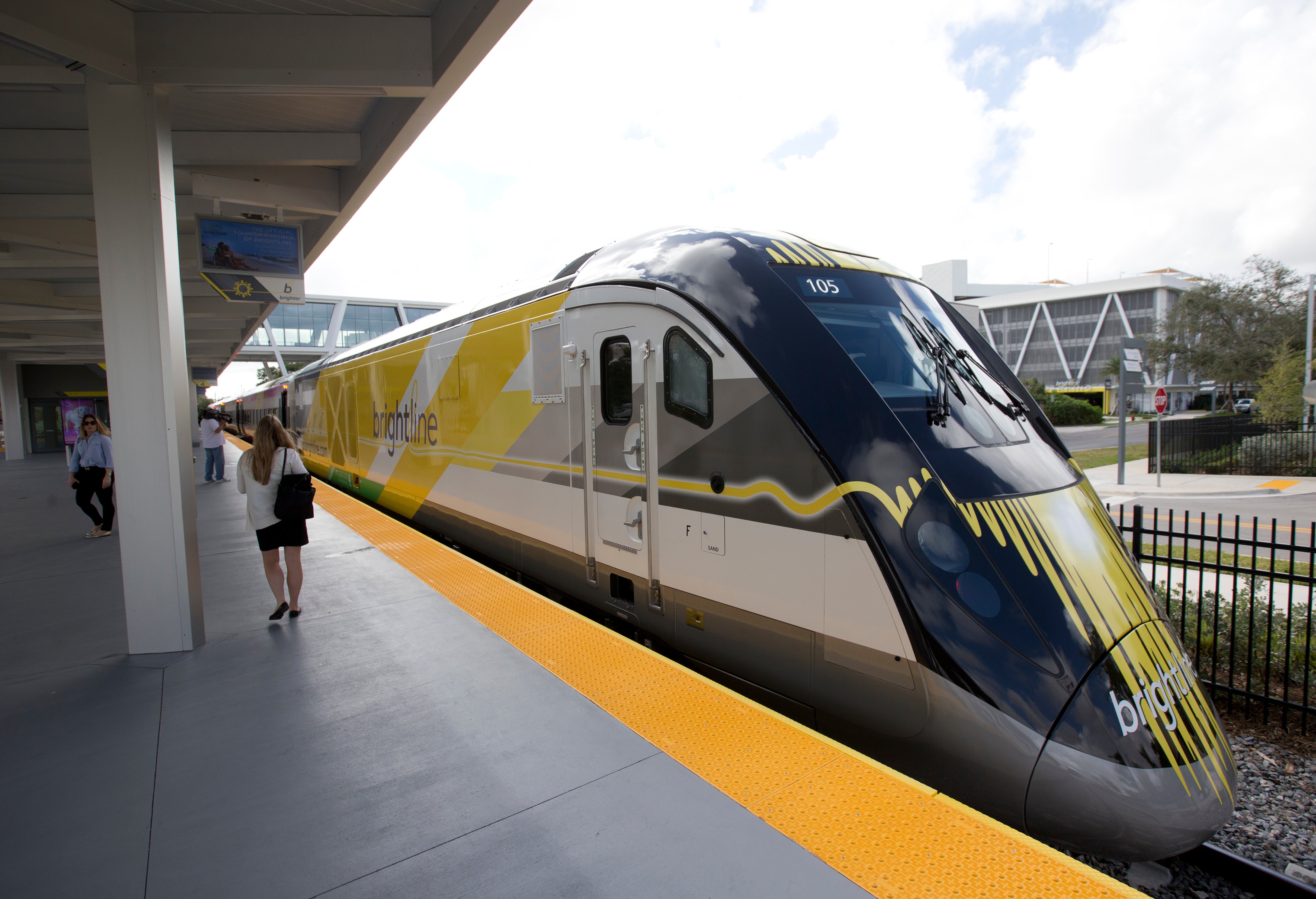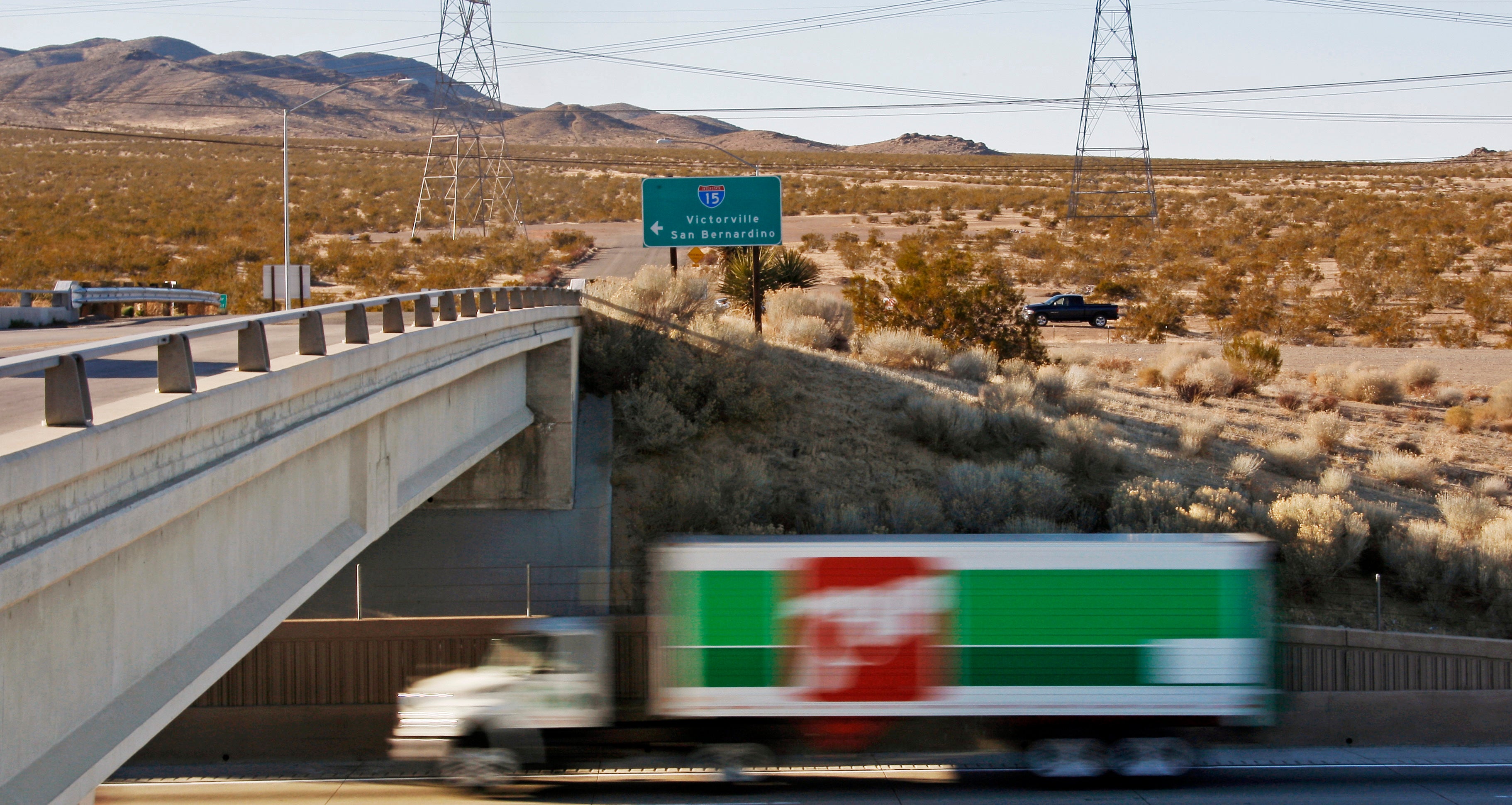From Sin City to the City of Angels: Work starts on $12bn train line connecting Las Vegas with Los Angeles
The project is touted as the first true high-speed passenger rail line in the nation, designed to reach speeds of 186 mph
Work has finally begun on a $12bn high-speed passenger rail line between Las Vegas and the Los Angeles area, with officials projecting millions of ticket-buyers will be boarding trains by 2028.
Brightline West, whose sister company already operates a fast train between Miami and Orlando in Florida, aims to lay 218 miles of new track between a terminal to be built just south of the Las Vegas Strip and another new facility in Rancho Cucamonga, California. Almost the full distance is to be built in the median of Interstate 15, with a station stop in San Bernardino County’s Victorville area.
In a statement on Monday, Brightline Holdings founder and Chairperson Wes Edens called the moment “the foundation for a new industry.”
Brightline aims to link other US cities that are too near to each other for flying between them to make sense and too far for people to drive the distance, Mr Edens said.
CEO Mike Reininger has said the goal is to have trains operating in time for the Summer Olympics in Los Angeles in 2028.

US Transportation Secretary Pete Buttigieg took part in Monday's groundbreaking. Brightline received $6.5bn in backing from the Biden administration, including a $3bn grant from federal infrastructure funds and approval to sell another $2.5bn in tax-exempt bonds. The company won federal authorization in 2020 to sell $1bn in similar bonds.
The project is touted as the first true high-speed passenger rail line in the nation, designed to reach speeds of 186 mph (300 kph), comparable to Japan’s Shinkansen bullet trains.
The route between Vegas and Los Angeles is largely open space, with no convenient alternate to I-15. Brightline’s Southern California terminal will be at a commuter rail connection to downtown Los Angeles.

The project outline says electric-powered trains will cut the four-hour trip across the Mojave Desert to a little more than two hours. Forecasts are for 11 million one-way passengers per year, or some 30,000 per day, with fares well below airline travel costs. The trains will offer rest rooms, Wi-Fi, food and beverage sales and the option to check luggage.
Las Vegas is a popular driving destination for Southern Californians. Officials hope the train line will relieve congestion on I-15, where motorists often sit in miles of crawling traffic while returning home from a Las Vegas weekend.

The Las Vegas area, now approaching 3 million residents, draws more than 40 million visitors per year. Passenger traffic at the city's Harry Reid International Airport set a record of 57.6 million people in 2023. An average of more than 44,000 automobiles per day crossed the California-Nevada state line on I-15 in 2023, according to Las Vegas Convention and Visitors Authority data.
Florida-based Brightline Holdings already operates the Miami-to-Orlando line with trains reaching speeds up to 125 mph (200 kph). It launched service in 2018 and expanded service to Orlando International Airport last September. It offers 16 round-trips per day, with one-way tickets for the 235-mile (378-kilometer) distance costing about $80.

Other fast trains in the U.S. include Amtrak’s Acela, which can top 150 mph (241 kph) while sharing tracks with freight and commuter service between Boston and Washington, D.C.
Ideas for connecting other U.S. cities with high-speed passenger trains have been floated in recent years, including Dallas to Houston; Atlanta to Charlotte, North Carolina; and Chicago to St. Louis. Most have faced delays.
In California, voters in 2008 approved a proposed 500-mile (805-kilometer) rail line linking Los Angeles and San Francisco, but the plan has been beset by rising costs and routing disputes. A 2022 business plan by the California High-Speed Rail Authority projected the cost had more than tripled to $105 billion.
Bookmark popover
Removed from bookmarks